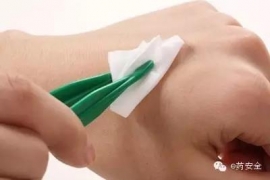
伤口世界


- 星期一, 11 11月 2019
术后伤口久不愈合治愈案
原创: 戚沁园博士 广州天河汉古中医
2015年04月12日
初诊
朱某某,女,39岁。
2011年行左腋下付乳腺切除术,术后反复出现术处出脓,伤口愈合不好。后经乳腺外科全科会诊后,由主任主刀做了次清创术,术后伤口出脓稍有减轻,但仍难以愈合,流水不断,查血糖正常。迁延至2015年3月初,全外科会诊,由大外科科主任主刀又行清创手术,术后仍伤口难以愈合,流水。病人痛苦异常,长期伤口处包裹辅料,每于夏季更为折磨。

- 星期一, 11 11月 2019
伤口消毒的常用药,都【消】对了吗?
原创: e药安全 e药安全
日常生活中发生点擦伤、摔伤扥,是常有的事,许多家庭的小药箱也备了消毒药水以备不时之需。本文将对日常生活中常见的消毒药水进行介绍。介绍中涉及专业内容,普通群众可略过。

- 星期一, 11 11月 2019
伤口被狗舔要不要打疫苗?医生这样说
原创: 任凯斌 杏花岛 2017-07-27
昨天,一个朋友打电话说,他腿上的伤口被流浪狗舔了一口,问我要不要打疫苗。我告诉他,为了以防万一,还是接种疫苗为好,因为你不确定那只狗到底有没有携带病毒。他说,上网查到有人说狂犬疫苗就是安慰剂,如果已经感染了,疫苗是起不到大作用的。

- 星期一, 11 11月 2019
骨科学霸谈“发物”是否影响伤口愈合
原创: 德尔康尼 吕游 骨事汇
做完手术后,能不能吃鱼吃海鲜?当外科医生十年,这个问题被问起的次数≈我的总手术量。先不公布正确答案,先说说我本人认识这个问题的心路历程。

- 星期一, 11 11月 2019
经验与教训:如何降低腹部伤口缝合的切口感染发生率?
原创: 胡海涛 普外时间 2017-09-23
编者按:本文所有观点均为个人经验总结或相关研究结论(已标注引文),而非指南共识,仅供医疗人士酌情借鉴。
腹部外科医生,最苦恼事情之一是:手术很完美,术后切口感染换药很长时间,需要不断地解释,甚至引起纠纷!
